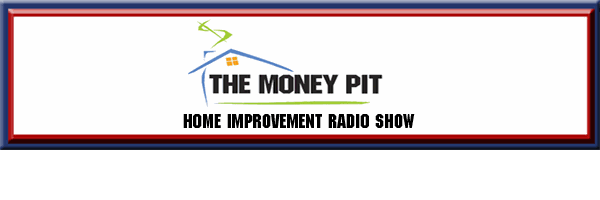By Mike Kinosian
TALKERS magazine
Managing Editor
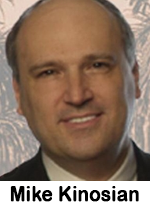 Despite his seemingly nonchalant, bad boy on-air persona, David Letterman is exceptionally respectful of broadcasting and its history.
Despite his seemingly nonchalant, bad boy on-air persona, David Letterman is exceptionally respectful of broadcasting and its history.
An easily discernable gleam could be seen in the late-night talk host’s eyes when – in 1993 – he formally announced he was jumping to CBS-TV.
One would be naïve not to think that the astonishingly lucrative payday played a significant part in his exhilaration, but Letterman was genuinely enthusiastic about joining the “Tiffany Network.” The entertainment division helped sculpt that vaulted reputation, but the Eye Network’s image was also greatly enhanced by its stellar news department.
Names of those who’ve graced CBS news broadcasts read like a veritable “Who’s Who” of the industry, with the incomparable Walter Cronkite at the very top.
Additionally, there’s Murrow. Sevareid. Collingwood. Rather. Reasoner. Wallace. Edwards. Kuralt. Safer. Mudd. Bradley. Schieffer. Stahl. Rooney. Burdett. Pauley. Hottelet. Chung. Threlkeld. O’Donnell. That just scratches the surface.
Perhaps no one on that – or any similar – list is more erudite, witty and thought provoking than Charles Osgood (Wood).
In a special April 18, 2005 NAB presentation in Las Vegas, the man who did as much for boosting bowtie sales (far pre-dating Tucker Carlson) received the Paul White Award from the RTNDA.
Established in 1956, the recognition carries on the name of CBS’ first news director.
Illustrious company
Past Paul White Award recipients have included Edward R. Murrow, Dan Rather, Bob Schieffer, Ed Bradley, Tom Brokaw, Ted Koppel, Peter Jennings, and Jane Pauley, who succeeded Osgood on CBS-TV’s “Sunday Morning” in 2016. Osgood humbly noted, “I’ve known about the Paul White Award for a long time and have been there to see others get it. It’s obviously a very distinguished company I join. I was there when [former CBS News Division President] Richard Salant [received] it and certainly regard it with a lot of respect. If you hang around long enough, it finally gets to be your turn.”
There’s a parallel with this recognition and Osgood’s 1990 induction to the NAB Hall of Fame. “[Neither] one is the kind of thing you campaign for,” he remarked. “The first I heard about it is when they called and told me it happened. There’s no tension about it and no disappointment that you didn’t get it.”
Mistaken identity
Rich, God-given voice with which Osgood was blessed became evident at an early age. “My dad was a textile salesman and executive. His name was Charles Osgood Wood – I’m actually Charles Osgood Wood, the third. I’d answer the phone and the person on the other end would [automatically assume they were talking to my father]. He and I talked almost exactly alike.”
Somewhat of a built-in schizophrenia existed in the famed broadcaster. A friend with whom he’d frequently play tennis noticed that when the multiple Peabody and Emmy Award winner screwed up he’d say, “Come on Osgood.” As a result, “I’d be harder on ‘Osgood’ than I would be on ‘Wood.’ You don’t talk to yourself when you do something right – you just sort of smile.”
Distinctive difference
Understandably, the natural tendency was to automatically link the instantly likable Osgood to CBS for his impeccable long-running role as voice/writer of CBS Radio’s “The Osgood File” and for hosting duties of CBS-TV’s “Sunday Morning.” In addition, he spent six years (1981-1987) as anchor of “The CBS Sunday Night News.”
Many, however, forget that predating those résumé credits, he toiled for ABC.
When he began there, ABC – as luck would have it – already had an announcer named Charles Woods. “In those days, some staff announcers did newscasts,” Osgood explained. “They hired me, but said they didn’t want to have a Charles Woods and a Charles Wood. When they told me to pick a name, I used my middle name as my last name. It’s worked out well and is a little more distinctive and professional.”
Safe haven
Selection of another type made a great impact on his life, as the broadcaster with the industry’s most stylish writing style was an Economics major at New York’s Fordham University. “I never really had an idea that this is what I was cut out to do,” Osgood candidly stated. “As a result, I never took any writing or editing courses. When I started [in broadcasting], I really hung on by my fingernails and just did it the best way I could think of. It took more than a couple of years to get a sense of what I could do. If I’d started the kinds of things in journalism school that I do now, they would have said, ‘No – that’s not how you do it.’ I would have had it drummed out of me early on.”
Thankfully though, someone realized a broadcaster existed within Osgood and the New York native became actively involved at Fordham’s campus radio station. “That was my locker – the place I’d go between classes,” he pointed out. “At least in those days, regardless of your [declared major], you really majored in Philosophy. You learned things like ethics, logic and cosmology. That really turned out to be pretty useful for what I’m doing.”
Never was there a moment’s regret for the father of five that he didn’t pursue a career in economics. “I’m not even sure I understood what economics was when I decided to make it my major,” Osgood sheepishly admitted. “I knew it had something to do with money and I thought it would be good to know something about that.”
Sailing with Uncle Walter
As things eventuated, it was immaterial that Osgood never took any college journalism courses. “I went to the best school of broadcast journalism that you could go to, [because] I got to work with Walter Cronkite and a pretty potent lineup of [other] people,” Osgood asserted. “I was often in the same room and could see how Walter’s mind worked and his idea of telling a story. He’s the most centered guy you’re ever going to meet and is very tough.”
Fabled anchorman Cronkite was also managing editor of “The CBS Evening News,” a responsibility he took very seriously. “He was a newsman and kept asking questions of everybody; I have all the respect in the world for him,” Osgood reverently recalled of Cronkite, who was 92 when he died in 2009. “Within a year after I went to work in the CBS newsroom, I found myself sailing in a boat with Walter Cronkite. I felt like I died and went to heaven.”
Mid-1950s on-air job at Washington, DC classical outlet WGMS enabled Osgood to display his familiarity with – and dexterity to handle – names like Nikolay Rimsky-Korsakoff. “I really did like that kind of music,” the long time ASCAP member emphasized. “They [eventually] gave me a job that was like the assistant to the GM. It paid all of about $25 a week, but I learned a little bit about station management. WGMS was sold to RKO General and I ended up being program director and, for a time, co-manager.”
Ahead of its time
Also dotting Osgood’s notable vitae is a 1963 stint as general manager of Hartford’s WHCT, the country’s first pay television station. “It was an over-the-air station that CBS owned at one time. It had a mechanism that would encode both picture and sound.”
Subscribers paid $125 for a decoder that needed to be attached to their television set; however, Osgood readily conceded it wasn’t exactly the ideal system. “Color was starting to come on strong, but this only worked in black and white, [so] we had a few strikes against us going in. We were, however, able to play ‘subsequent first-run’ movies – [films] that hadn’t yet been seen in local theaters.”
A tape inside the decoder recorded what a subscriber watched and customers were sent a bill once a month. “The system as an experiment failed, but it was not a bad idea,” Osgood maintained. “Now, of course, we have pay-per-view television, which is essentially the same thing.”
Shared versus singular responsibilities
Each Osgood-fronted “Sunday Morning” broadcast concluded with the affable host reminding viewers that he would, “See you on the radio,” which was his way of reinforcing that radio is a visual medium. “You create pictures in your own mind and those are much richer than the ones that can be shown on television,” Osgood contended. “On television, what you see is what you get and [that medium] is very pre-occupied with the picture. There’s often wonderful writing there, but television people don’t tend to think about that or the sound at all.”
Images are their main focus and having had vast experience in each medium, Osgood opined that radio is a much more individual effort. “You decide what you’re going to do; you write it; and you do it. You can take all the credit or blame for whatever you do on radio. Television is a collaborative process. There are producers, writers and photographers. One person really can’t take any bows.”
Demanding schedule
One hour separated each of his four daily “Osgood File” features. The general rule was that Osgood didn’t start writing the next one until he finished delivering the last. “If it takes more than an hour, I’m in a lot of trouble,” he deadpanned. “I have to write it in somewhat less than an hour.”
Preparation for that Monday through Friday workday ritual began at the petrifying time of 2:30 am. “It somehow always feels like a horrible mistake when the alarm goes off then,” Osgood declared in his perfectly inflected trademark delivery. “I’m usually in the office at 4:30 am. I have to get my ducks in a row before [doing the first piece] so I know what I’m going to do the rest of the morning. You spend part of that time reading to see what’s there in the way of tape and to see what news stories are of interest that morning.”
Newspapers, wire sources and the internet provided plenty of possibilities, so Osgood didn’t start worrying about what he was going to put on paper until he arrived at the office. “The news is a constantly refreshing source of material,” he commented. “If you’re doing something that has to last for a long time, you have a different problem. It’s just a question of what you can get your teeth into.”
Road to Sunday Morning
Four-year tour of duty (1967 – 1971) as morning anchor/reporter at New York City’s all-news WCBS-AM got Osgood accustomed to getting up early; he had the luxury of sleeping in until 4:30 am each Sunday. “You have no idea how much later 4:30 am is than 2:30 am,” he convincingly put forth. “I don’t have to get up early on Saturdays. There are [‘Osgood File’] shows, but they’re repeats of things that were done during the week. It’s a great delight to wake up on a Saturday and then realize I can go back to sleep, but it’s still never that late. I get up by 7:00 am.”
Energetic Osgood actually preferred a slow news day when it came to doing his 90-minute Sunday television broadcast. “I’m certain I’m the only network TV anchor who hopes there’s no news. We’ve worked on the show all week and want to do the broadcast that was planned. Some of our shows have themes or, at least, have connections between the pieces. If there’s a big story, you might have to throw something out and that may – or may not – hold up the following week.”
Succeeding Charles Kuralt as host of “Sunday Morning” nearly 30 years ago (4/10/1994) was a tough act for Osgood to follow, especially since he viewed “On The Road” legend Kuralt as a great personal hero. “He was one of the best who ever came along,” Osgood succinctly stressed. “Charles was a country boy with that wonderful North Carolina accent and had a way of using the language. I thought he was simply terrific. He taught me a lot, [including] not to imitate or copy what you hear. He was in control of every sentence he put down and had an idea of how he wanted to come across to the audience; he was really brilliant.”
Admiration for his predecessor
No advance notice was given to Osgood that his colleague – who would die of complications from lupus in 1997 at just 62 – was planning to leave the Sunday morning show. “I remember getting up one day at the usual hour and putting on my socks in a dark room,” Osgood recollected. “I had the radio on and heard Charlie had announced his retirement. That was terrible news and it never even occurred to me that CBS might ask me to replace him. For one thing, I was older than Charles [by approximately 20 months]. You don’t replace a person who retires with someone older, but that’s what happened. The real reason I got the job was they needed someone whose first name is Charles.”
Sunday’s audience was conditioned to expect a high-level broadcast, and Osgood acknowledged that made the transition much easier. “As long as I didn’t try to be Charles and try to do an imitation of him, I thought I’d be okay [provided] the audience would put up with me long enough to get used to me.”
Certain things about the CBS-TV show were the same every week. “When we change something, the audience usually doesn’t like it at first,” Osgood contended. “It was especially daunting for me at the beginning because [Kuralt] was so terrific.”
All tied up
Play a visual word association game about Osgood and “bowtie” will invariably be the first response, but he viewed that fashion statement as a relatively new choice. “I’ve only been doing it for 20 years,” he quipped tongue-in-cheek.
It all began when he wore a clip-on bowtie to work one day. CBS-TV “Evening News” writer John Mosedale admonished Osgood to never wear a clip-on. “He actually walked me into the men’s room and taught me how to tie a bowtie. When you teach an old dog a new trick, he wants to keep doing it. I wear a bowtie when I do speaking dates or television. The excuse I use for my attire is that I get dressed in the dark.”
Write stuff
This author of six books (the last one, 2004’s “Defending Baltimore Against Enemy Attack”) also formerly wrote a “USA Weekend” column and a King Features’ syndicated column. Moreover, he had a full plate with four daily CBS Radio shows (via Westwood One) and a weekly morning television show. “I always have a book that I’m either thinking about or actually in the process of writing,” CBS’ “Poet In Residence’ disclosed. “I’ve been talking with publishers about several book ideas, but they’re not far enough along to really [discuss] at this point. The [leisure time] thing I do more than anything else is fooling around at the piano; I like doing that.”
Unexpected situations like receiving the Paul White Award; being inducted into the NAB Hall Of Fame; and replacing Charles Kuralt as host of CBS Sunday Morning seemed to be the norm for the 1999 International Radio & Television Society Foundation award winner for Significant Achievement.
Long-range plans
With that as a backdrop, it was noteworthy that Osgood never considered himself to be a permanent replacement for Dan Rather on the “CBS Evening News” – a job that would eventually go to Katie Couric in 2006. “I’m not a candidate for anything,” Osgood vehemently insisted to me in our conversation, “[although] I do think it’s important that the ‘CBS Evening News’ be our flagship show. When they asked Bob Schieffer what he thought about doing ‘The Evening News,’ he said it was something to keep him busy until he was old enough to be on ‘60 Minutes.’”
More than satisfied to have carried on with his radio and television assignments, Osgood – who had a summer residence in France – didn’t look forward to retirement. “I like vacations, but I like them because they are vacations. It’s nice to get away from work, but that’s only if you’re working. I hope they realize I intend to continue to do this for a long time. If it stops being fun, that’s when it’s time to hang it up.”
Mike Kinosian can be emailed at Mike.Kinosian@gmail.com
Share this with your network
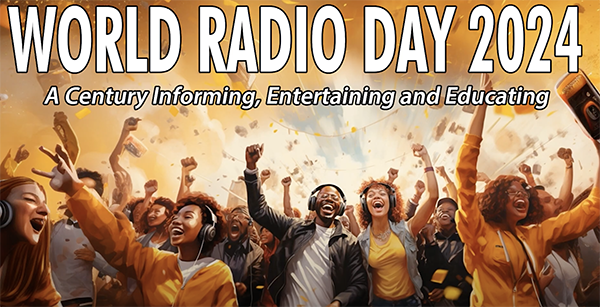
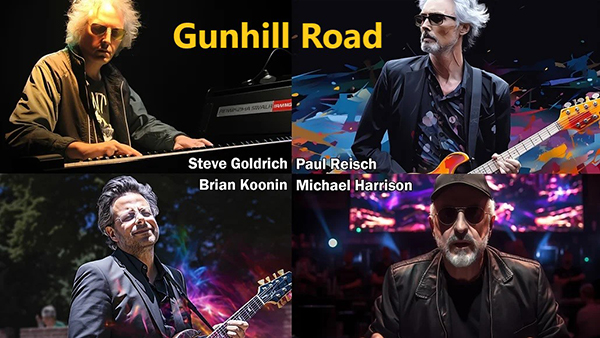



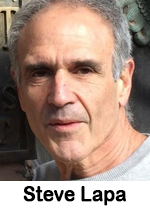 One person can make a difference.
One person can make a difference.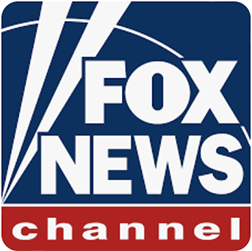 network across both total day and primetime with total viewers and the 25-54 demographic. FNC continued its ratings dominance for the month of January and grew its primetime audience in total viewers versus January 2023. Additionally, FNC was the only cable news network to show year-over-year growth in the younger 18-34 demo, growing 18% in total day and 25% in primetime, while MSNBC and CNN are experiencing double-digit declines.” FOX News Media CEO Suzanne Scott comments, “Marking another historic feat is a true reflection of the unwavering dedication and outstanding talent that we have throughout the entire organization of FOX News Channel.”
network across both total day and primetime with total viewers and the 25-54 demographic. FNC continued its ratings dominance for the month of January and grew its primetime audience in total viewers versus January 2023. Additionally, FNC was the only cable news network to show year-over-year growth in the younger 18-34 demo, growing 18% in total day and 25% in primetime, while MSNBC and CNN are experiencing double-digit declines.” FOX News Media CEO Suzanne Scott comments, “Marking another historic feat is a true reflection of the unwavering dedication and outstanding talent that we have throughout the entire organization of FOX News Channel.” Despite his seemingly nonchalant, bad boy on-air persona, David Letterman is exceptionally respectful of broadcasting and its history.
Despite his seemingly nonchalant, bad boy on-air persona, David Letterman is exceptionally respectful of broadcasting and its history.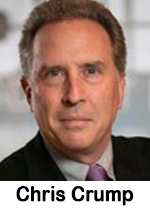 Yellowtec, will be discussing new developments and TALKERS founder Michael Harrison will be chatting about the forthcoming United Nations’
Yellowtec, will be discussing new developments and TALKERS founder Michael Harrison will be chatting about the forthcoming United Nations’ 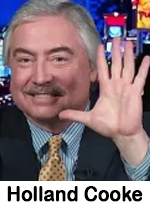 If you’ve been seeing CES coverage on network and cable newscasts this week, you’ve heard it called “the Consumer Electronics Show,” despite we-the-media being told not to. They want us to say “CES,” although, years ago, the Consumer Electronics Association changed its name to the Consumer Technology Association, not its first rebrand.
If you’ve been seeing CES coverage on network and cable newscasts this week, you’ve heard it called “the Consumer Electronics Show,” despite we-the-media being told not to. They want us to say “CES,” although, years ago, the Consumer Electronics Association changed its name to the Consumer Technology Association, not its first rebrand.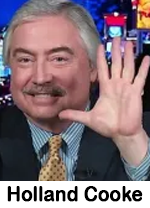 Hello from Las Vegas, where your undaunted correspondent dutifully suffered the long, long line snaking through the ballroom corridors at Mandalay Bay for what is, each year, a data feast: the Consumer Technology Association’s “Tech Trends to Watch” presentation.
Hello from Las Vegas, where your undaunted correspondent dutifully suffered the long, long line snaking through the ballroom corridors at Mandalay Bay for what is, each year, a data feast: the Consumer Technology Association’s “Tech Trends to Watch” presentation.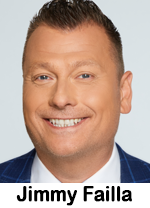 success story and a perfect fit for this role. We look forward to watching him make America laugh on Saturday nights.” Failla comments, “‘FOX News Saturday Night’ is a show for everyone who realizes that our country doesn’t need more Republicans or more Democrats, it needs more comedy.” In addition, FOX Nation just released a one-hour special showcasing Failla’s recent standup comedy performance to a sold-out crowd on Long Island, titled, “Jimmy Failla: They’re Just Jokes.” Failla is also the latest author to be published by FOX News Books with Cancel Culture Dictionary being released on January 30.
success story and a perfect fit for this role. We look forward to watching him make America laugh on Saturday nights.” Failla comments, “‘FOX News Saturday Night’ is a show for everyone who realizes that our country doesn’t need more Republicans or more Democrats, it needs more comedy.” In addition, FOX Nation just released a one-hour special showcasing Failla’s recent standup comedy performance to a sold-out crowd on Long Island, titled, “Jimmy Failla: They’re Just Jokes.” Failla is also the latest author to be published by FOX News Books with Cancel Culture Dictionary being released on January 30.  the blessing of the lenders, the company will be owned by those same lenders. Audacy’s debt is approximately $2 billion. It began talks with lenders in October after the company sought and received amendments to its credit facilities because it is unable to make interest payments due largely to the industry-wide downturn in advertising revenue. The 2017 acquisition of the CBS Radio assets is cited among industry watchers as the move that pushed Audacy into its currently precarious situation.
the blessing of the lenders, the company will be owned by those same lenders. Audacy’s debt is approximately $2 billion. It began talks with lenders in October after the company sought and received amendments to its credit facilities because it is unable to make interest payments due largely to the industry-wide downturn in advertising revenue. The 2017 acquisition of the CBS Radio assets is cited among industry watchers as the move that pushed Audacy into its currently precarious situation.  Music, and it reached #1 in the Business category on Spotify in 2023. Program co-host Dave Ramsey says, “Thank you to everyone who works daily on our show. And thanks to all our listeners for choosing to spend your time with the Ramsey personalities and me. I’m honored.” On the program, Ramsey is joined each day by a rotating cast of co-hosts, including Rachel Cruze, Ken Coleman, Jade Warshaw, George Kamel and Dr. John Delony. The Ramsey Network says that in 2023, callers to the show paid off more than $36 million in debt, inspiring the millions of people that listen to the show on podcast and radio or watch on YouTube.
Music, and it reached #1 in the Business category on Spotify in 2023. Program co-host Dave Ramsey says, “Thank you to everyone who works daily on our show. And thanks to all our listeners for choosing to spend your time with the Ramsey personalities and me. I’m honored.” On the program, Ramsey is joined each day by a rotating cast of co-hosts, including Rachel Cruze, Ken Coleman, Jade Warshaw, George Kamel and Dr. John Delony. The Ramsey Network says that in 2023, callers to the show paid off more than $36 million in debt, inspiring the millions of people that listen to the show on podcast and radio or watch on YouTube. 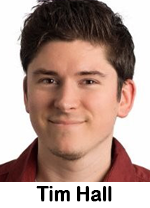 director and operations manager Matt Fishman says, “Tim’s extensive background in the sports talk format is invaluable as we continue to grow ‘97.1 The Fan’ and ‘1460 ESPN’ here in Columbus. I look forward to watching Tim grow in this new role and seeing his impact on the team and the overall product.” Station manager Cody Welling adds, “For the last several months, Tim has expressed the interest and ability to grow as a broadcaster and as a programmer. As ‘97.1 The Fan’ continues to innovate as one of the elite sports radio properties in the United States, I’m excited to see the contributions that Tim will deliver for our station and the community.”
director and operations manager Matt Fishman says, “Tim’s extensive background in the sports talk format is invaluable as we continue to grow ‘97.1 The Fan’ and ‘1460 ESPN’ here in Columbus. I look forward to watching Tim grow in this new role and seeing his impact on the team and the overall product.” Station manager Cody Welling adds, “For the last several months, Tim has expressed the interest and ability to grow as a broadcaster and as a programmer. As ‘97.1 The Fan’ continues to innovate as one of the elite sports radio properties in the United States, I’m excited to see the contributions that Tim will deliver for our station and the community.”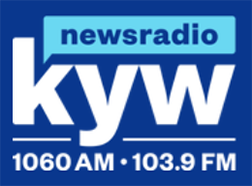 news reports that aired on KYW. Tom Rickert, who serves as assistant brand manager and director of podcasts for KYW Newsradio, says, “There’s no other program that gives students an opportunity to learn from top professionals in news and sports media at one of the best broadcasting facilities in the country. And five decades in, we’re reuniting with parents who graduated from ‘Newstudies’ when they were in high school, who are now watching their teenagers graduate from the same program. We hope to keep investing in the young people of Philadelphia and the Delaware Valley for generations to come, and we’re thrilled to be able to work with our partners at the Klein College of Media and Communication [at Temple University] to make this happen.” At Saturday’s graduation, KYW Newsradio awarded the $2,000 Richard Monetti Scholarship to William Bowens of Sankofa Freedom Academy Charter School. The yearly scholarship is named for a “Newstudies” graduate killed in the 1988 bombing of Pan Am Flight 103 and honors a student whose work demonstrates overall excellence.
news reports that aired on KYW. Tom Rickert, who serves as assistant brand manager and director of podcasts for KYW Newsradio, says, “There’s no other program that gives students an opportunity to learn from top professionals in news and sports media at one of the best broadcasting facilities in the country. And five decades in, we’re reuniting with parents who graduated from ‘Newstudies’ when they were in high school, who are now watching their teenagers graduate from the same program. We hope to keep investing in the young people of Philadelphia and the Delaware Valley for generations to come, and we’re thrilled to be able to work with our partners at the Klein College of Media and Communication [at Temple University] to make this happen.” At Saturday’s graduation, KYW Newsradio awarded the $2,000 Richard Monetti Scholarship to William Bowens of Sankofa Freedom Academy Charter School. The yearly scholarship is named for a “Newstudies” graduate killed in the 1988 bombing of Pan Am Flight 103 and honors a student whose work demonstrates overall excellence.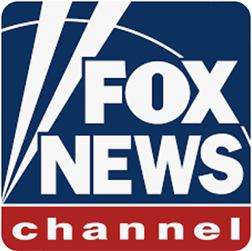 with the success of its daytime programming, positions it as the number one network in cable news. FNC says it had the largest share of the audience in total day (46%) and primetime (48%), capturing nearly half of the cable news landscape. In primetime, FNC delivered nearly 2 million viewers and 214,000 in the 25-54 demo, topping CNN and MSNBC combined in total viewership. On a 24-hour total day basis, FNC averaged over 1.2 million viewers and 150,000 in 25-54, with a 153% advantage over CNN in viewers. FOX News Media CEO Suzanne Scott says, “During yet another unprecedented news cycle, cable viewers continued to choose FOX News Channel. From moderating debates to reporting in war zones and many stories in between, I am honored to work alongside this unrivaled team of journalists and opinion hosts as they continue to exceed expectations.”
with the success of its daytime programming, positions it as the number one network in cable news. FNC says it had the largest share of the audience in total day (46%) and primetime (48%), capturing nearly half of the cable news landscape. In primetime, FNC delivered nearly 2 million viewers and 214,000 in the 25-54 demo, topping CNN and MSNBC combined in total viewership. On a 24-hour total day basis, FNC averaged over 1.2 million viewers and 150,000 in 25-54, with a 153% advantage over CNN in viewers. FOX News Media CEO Suzanne Scott says, “During yet another unprecedented news cycle, cable viewers continued to choose FOX News Channel. From moderating debates to reporting in war zones and many stories in between, I am honored to work alongside this unrivaled team of journalists and opinion hosts as they continue to exceed expectations.” million viewers, according to data from Nielsen Media Research. The Sean Hannity-hosted program pulled in 742,000 viewers in the 25-54 demo, which FNC says represented nearly 73% of the cable news share in total viewers and 77% of the cable news share in the key demo. Additionally, the Hannity-hosted post-debate show earned 3.4 million total viewers and 541,000 in the A25-54 demo.
million viewers, according to data from Nielsen Media Research. The Sean Hannity-hosted program pulled in 742,000 viewers in the 25-54 demo, which FNC says represented nearly 73% of the cable news share in total viewers and 77% of the cable news share in the key demo. Additionally, the Hannity-hosted post-debate show earned 3.4 million total viewers and 541,000 in the A25-54 demo.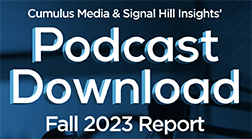 2) Audio is powerful. Podcast consumers spend a significant amount of time on YouTube listening to podcasts without watching the video; 3) Since 2019, YouTube and
2) Audio is powerful. Podcast consumers spend a significant amount of time on YouTube listening to podcasts without watching the video; 3) Since 2019, YouTube and 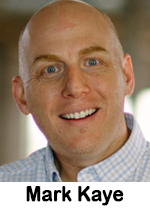 We have a saying around “The Mark Kaye Show” studio:
We have a saying around “The Mark Kaye Show” studio: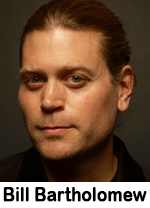 Folks in the Gen Z and millennial demographics are heavily
Folks in the Gen Z and millennial demographics are heavily 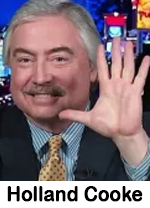 Feel busy? Try keeping-up with these four:
Feel busy? Try keeping-up with these four: